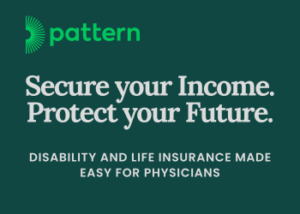It was 1978 and I was a third year medical student when my friend was slowly dying of metastatic breast cancer.
Her deteriorating cervical spine, riddled with tumor, was stabilized by a metal halo drilled into her skull and attached to a scaffolding-like contraption resting on her shoulders. Vomiting while immobilized in a halo became a form of medieval torture. During her third round of chemotherapy, her nausea was so unrelenting that none of the conventional medications available at the time would give her relief. She was in and out of the hospital multiple times for rehydration with intravenous fluids, but her desire was to be home with her husband and children for the days left to her on this earth.
Her family doctor, at his wit’s end, finally recommended she try marijuana for her nausea. My friend was willing to try anything at that point, so one of her college age children located a using friend, bought some bud and brought it home.
Smoking, because of its relatively rapid effects, it didn’t do much other than make her feel “out of it” so that she was less aware of her family, and she hated that the entire house reeked of weed, especially as she still had two teenage children still at home. Her nausea prevented her from eating marijuana mixed into brownies or cookies.
Desperate times called for desperate measures. I simmered the marijuana in a small amount of water to soften it, then combined it with melted butter. That mixture was chilled until it was solid and I molded multiple bullet size suppositories, which were kept in the freezer until needed for rectal administration. Although we never could warm up the suppositories to a temperature that was comfortable for her without them melting into unusable marijuana mush, she found that she could get relief from the nausea within twenty minutes of inserting the frozen marijuana butter rectally. It worked, without her feeling as stoned as the smoked marijuana.
My actions, though compassionate, were also illegal and if my medical school had found out I was acting as an apothecary, preparing an illicit drug for use for a non-FDA approved indication, I could have lost my student standing and future profession. I don’t regret that I did what I could to help my friend when she needed it. Subsequent studies have confirmed the efficacy of marijuana, in various forms, for nausea from HIV and chemo, muscle spasm from multiple sclerosis and quadra- and paraplegia, some types of chronic pain, and glaucoma, yet it has never been seen by the medical community a first line drug for any of those conditions. I have prescribed Marinol, the oral form of cannabis, in a few cases where it was warranted because of the refractory nature of the patient’s symptoms, for indications that are supported by controlled clinical studies. This made sense and like most medications, it worked for some, not for all.
Yet if you believe the extremely vocal marijuana proponents, cannabis can treat almost any condition under the sun, and in a number of states now is being prescribed and encouraged for everything from anxiety to insomnia to sinusitis to asthma to arthritis to headaches to premenstrual syndrome. If you are simply alive, there is a good chance you have at least one symptom that warrants a medical marijuana card. It is a fine example of not so modern snake oil, as it has been around for thousands of years, except now we have multiple state legislative bodies putting their stamp of approval on it. I’m concerned our nation’s overwhelming drug abuse statistics will not decline with the legalization of the possession of small amounts of marijuana for medicinal purposes, in addition to open marketing, sale and distribution. We are simply bringing the dealers and pushers out of the shadows–not a bad thing if we can all agree that a staggering percentage of the population, including our adolescents, suffer symptoms deemed worthy of being medicated with a mood altering substance well known to cause dependency, not to mention a host of psychiatric problems in vulnerable individuals.
Patients who have antipathy for the pharmaceutical industry or for government agencies responsible for studies of drug safety and effectiveness seem to lose their skepticism when confronting the for-profit motivation of marijuana growers, brokers and storefront sellers. These patients prefer to trust a physician willing to pocket $150 cash for a ten minute assessment of symptoms in exchange for a signature on a medical marijuana card. Many choose not to be followed by responsible health care providers who might actually take a thorough history, do a complete examination and lab tests including drugs of abuse testing, possibly order confirmatory imaging studies, and might actually recommend treatment that is proven in multiple controlled studies to be effective.
Over the last few weeks in my university health center clinic I’ve been asked by several otherwise healthy teenage college students if I would prescribe medical marijuana for their stress-related daily headaches. These young people have friends who have gotten their medical marijuana card elsewhere so they can “smoke whenever they need to” without fear of being found in possession by law enforcement. They want the “get out of jail free” card, or better yet, “never get arrested to begin with” card. They have symptoms, as all of us do, but none of these are patients with chronic disease found unresponsive to other treatment. These are patients who have never had more than a cursory headache evaluation, never had a trial of non-pharmaceutical modalities like relaxation techniques or massage, or prophylaxis with non-addictive medication. Yet they are willing to sign on to a substance that has, at best, a shadowy origin, no quality standards in production, distribution or dosing, is traditionally and most expediently used only by inhaling, and has well-studied adverse effects on memory, focus and reaction time. All this defies logic, especially in a college student who needs every neuron at the ready to absorb, retain and process complex information, something marijuana has proven ability to impair. I’m perplexed at how easily these leaves of grass are given a pass by young and old, rich and poor, professional and blue collar, liberal and conservative.
It could be that over twenty years of addiction treatment work with thousands of chemically dependent patients has warped my perspective about this weed forever. I see marijuana as the “least” of the problem recreational drugs, to be sure, and not nearly as physically devastating as alcohol, benzodiazepines, methamphetamines, or opiates. None the less, I’ve seen it ruin lives, not because of dangerous side effects, nor fatal overdoses, nor instigation of violent behavior. In its twenty first century ultra high concentrated version, far more powerful than the weed of the sixties and seventies, it just makes people so much less alive and engaged with the world. They are anesthetized to all the opportunities and challenges of life. You can see it in their eyes and hear it in their voices. In a young person who uses regularly, which a significant percentage choose to do in their fervent belief in its safety, it can mean more than temporary anesthesia to the unpleasantness of every day hassles. They never really experience life in its full emotional range from joy to sadness, learning the sensitivity of becoming vulnerable, the lessons of experiencing discomfort and coping, and the healing balm of a resilient spirit. Instead, it is all about avoidance.
Benumbed, blunted, and stunted. I’m sure this is must be yet another indication for the prescription of medical marijuana.
Emily Gibson is a family physician who blogs at Barnstorming.
Submit a guest post and be heard on social media’s leading physician voice.






















![Better dizziness diagnosis through skilled exams [PODCAST]](https://kevinmd.com/wp-content/uploads/Design-3-190x100.jpg)

![More than a meeting: Finding education, inspiration, and community in internal medicine [PODCAST]](https://kevinmd.com/wp-content/uploads/Design-4-190x100.jpg)
